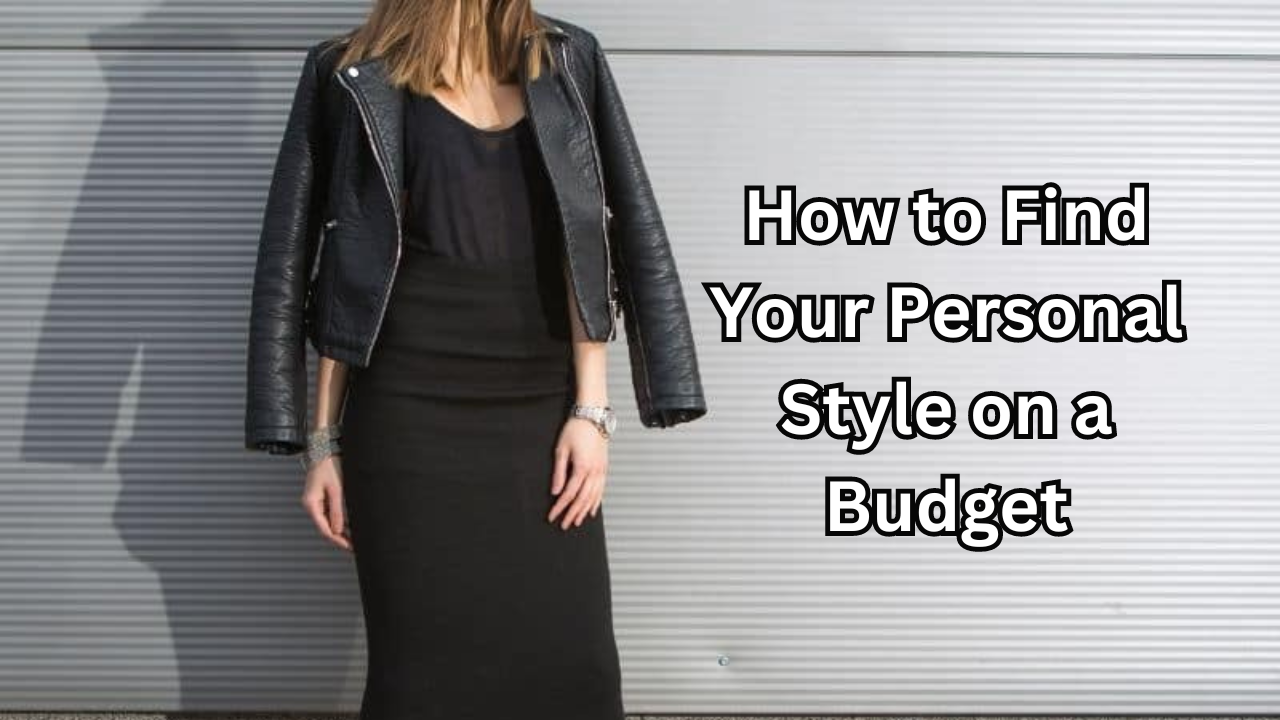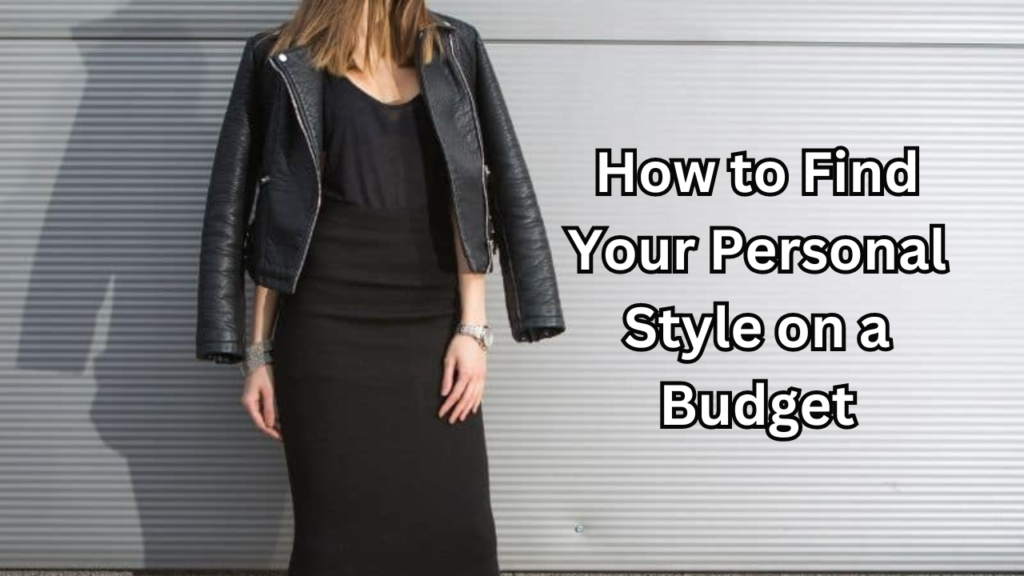

Table of Contents
Introduction:
Developing a personal style is a journey of self-expression and confidence, but it doesn’t have to come with a hefty price tag. Whether you’re starting from scratch or refining your existing wardrobe, finding your unique style on a budget is entirely possible with a little creativity and strategic planning. By assessing what you already own, seeking inspiration, shopping smart, and incorporating DIY projects, you can curate a wardrobe that reflects your personality and makes you feel great. This guide will walk you through practical steps to discover and cultivate your personal style without overspending.
Assess Your Current Wardrobe
A crucial first step in finding your personal style on a budget is to thoroughly assess your current wardrobe. This process helps you understand what you already have, what you love, and what you might need to let go of.
Take Inventory
Begin by going through your existing clothes. Pull everything out of your closet and drawers and lay it all out where you can see it. As you sort through each item, identify the pieces you love and wear often. These favorites are the foundation of your personal style and give you clues about your preferences.
Declutter
Next, it’s time to declutter. Remove items that no longer fit, are damaged, or haven’t been worn in over a year. Be honest with yourself about what you truly need and love. Letting go of these pieces will make room for new additions that better reflect your evolving style.
Identify Patterns
Finally, take note of any patterns that emerge. Notice the colors, patterns, and styles you gravitate towards. Are there certain shades you consistently choose? Do you prefer classic cuts or trendy silhouettes? Identifying these patterns will help you make informed decisions when adding new pieces to your wardrobe, ensuring they align with your established preferences.
Define Your Style
Once you’ve assessed your current wardrobe, it’s time to define your personal style. This involves gathering inspiration and identifying the key elements that resonate with you.
Create a Mood Board
Start by creating a mood board. Use Pinterest or a physical board to collect images of outfits and styles that inspire you. Pin or paste photos of clothing, accessories, and even color palettes that catch your eye. Over time, you’ll see patterns and themes emerge, giving you a visual representation of your ideal style.
Look for Inspiration
Expand your search for inspiration by following Men fashion bloggers, influencers, and celebrities whose style you admire. Pay attention to how they put together outfits, mix and match pieces, and use accessories. Their style can provide valuable insights and ideas that you can adapt to fit your own preferences and budget.
Identify Key Elements
As you gather inspiration, take note of the key elements that consistently appear in the outfits you like. This includes specific cuts, fabrics, colors, and patterns. Do you prefer tailored looks or relaxed fits? Are you drawn to bold prints or neutral tones? Identifying these common elements will help you refine your style and make more deliberate choices when adding new pieces to your wardrobe.
Set a Budget
Finding your personal style on a budget requires careful financial planning. Setting a budget ensures that you can build your wardrobe without overspending.
Determine Your Spending Limit
First, decide how much you can afford to spend on clothing each month or season. Consider your overall financial situation and other expenses to establish a realistic spending limit. Having a clear budget helps you make mindful purchasing decisions and prevents impulse buys.
Prioritize Purchases
With your budget in place, prioritize your purchases. Focus on buying versatile, timeless pieces first. These are items that can be mixed and matched with different outfits and will remain stylish over time. Classic pieces like a well-fitted blazer, a pair of quality jeans, or a simple black dress provide a strong foundation for your wardrobe and can be dressed up or down for various occasions. By prioritizing these essential items, you can maximize your budget and build a functional, stylish wardrobe.
Shop Smart
Shopping smart is key to finding your personal style on a budget. By being strategic about where and how you shop, you can find great pieces without overspending.
Thrift Stores and Second-Hand Shops
Explore thrift stores, consignment shops, and online resale platforms. These places often have unique, high-quality items at a fraction of the retail price. Take your time to sift through the racks and discover hidden gems that fit your style. Shopping second-hand is not only budget-friendly but also environmentally conscious.
Sales and Discounts
Take advantage of sales, use coupons, and sign up for store newsletters to access discounts. Timing your purchases for sales events, such as end-of-season sales, holiday sales, or clearance events, can save you a significant amount of money. Additionally, many stores offer discounts for signing up for their newsletters or loyalty programs.
Quality over Quantity
Invest in fewer, higher-quality pieces rather than many inexpensive items. Quality pieces tend to last longer, look better, and feel more comfortable. Prioritize items made from durable fabrics with good construction. Over time, building a wardrobe of quality essentials will prove more cost-effective than frequently replacing cheaper, lower-quality items.
DIY and Upcycle
Getting creative with DIY projects and upcycling can significantly enhance your wardrobe while staying within your budget.
Alter Existing Clothes
Start by tailoring or modifying current items to better fit your style. This could involve adjusting hemlines, taking in or letting out seams, or adding embellishments like patches or buttons. Tailoring can breathe new life into pieces that you already own but may not wear often due to fit or style.
Learn Basic Sewing Skills
Learning simple sewing techniques can empower you to customize and repair clothing. Basic skills like sewing on buttons, hemming pants or skirts, and even simple alterations can make a big difference in how your clothes fit and look. There are plenty of online tutorials and beginner sewing classes available to help you get started.
Upcycle Old Clothes
Transform old or outdated items into something new and trendy through upcycling. This could involve repurposing fabrics from old clothes to create accessories like scarves or bags, turning a dress into a skirt, or using dye to refresh faded garments. Upcycling not only saves money but also allows you to express your creativity and reduce waste.
By embracing DIY and upcycling, you can personalize your wardrobe with unique touches that reflect your style preferences while minimizing your environmental footprint.
Mix and Match
Creating diverse outfits from a limited wardrobe is key to maximizing your style on a budget. Here’s how to mix and match effectively:
Versatile Pieces
Opt for items that can be easily mixed and matched to create multiple outfits. Look for basics like neutral-colored tops and bottoms, classic jeans, and versatile dresses that can be styled in different ways. These foundational pieces form the backbone of your wardrobe and offer endless outfit combinations.
Accessorize
Accessorizing is a budget-friendly way to change up your look without buying new clothes. Experiment with scarves, belts, jewelry, hats, and bags to add flair to your outfits. Accessories can instantly elevate a simple outfit, making it suitable for different occasions or seasons. They also allow you to showcase your personal style and keep your wardrobe feeling fresh and updated.
By focusing on versatile pieces and utilizing accessories creatively, you can maximize the potential of your wardrobe without constantly buying new clothes. This approach not only saves money but also encourages creativity and resourcefulness in your personal style expression.
Follow Trends Wisely
Navigating fashion trends while staying within budget requires a strategic approach. Here’s how to incorporate trends without overspending:
Incorporate Trends Sparingly
Introduce trendy pieces into your wardrobe in small doses. This allows you to experiment with current styles without committing a significant portion of your budget. Look for affordable options or consider second-hand sources for trendy items that may not be long-term investments.
Focus on Timeless Trends
Prioritize trends that align with your personal style and have staying power. These are trends that transcend seasonal fads and can be incorporated seamlessly into your existing wardrobe. Classic patterns like stripes or timeless pieces like trench coats are examples of trends that remain stylish year after year.
By selectively incorporating trends and focusing on those that resonate with your style, you can maintain a current look without constantly updating your wardrobe. This approach not only saves money but also ensures that your style remains authentic and enduring.
Take Care of Your Clothes
Maintaining your wardrobe properly ensures that your clothes remain in good condition for longer, saving you money in the long run. Here are essential tips for caring for your clothes:
Proper Maintenance
Follow the care instructions on the clothing labels to preserve their quality. This includes washing garments in the appropriate water temperature, using gentle detergents, and avoiding harsh drying methods like tumble drying. Proper storage, such as hanging delicate items or folding knits, also prevents stretching or damage.
Repair When Needed
Regularly inspect your clothes for minor damages, such as loose threads, missing buttons, or small tears. Fixing these issues promptly prevents them from worsening and extends the lifespan of your garments. Basic sewing skills can be handy here, allowing you to perform simple repairs yourself or take items to a tailor for more complex fixes.
By taking care of your clothes diligently, you not only prolong their usability but also reduce the frequency of replacing items due to wear and tear. This mindful approach to maintenance contributes to a more sustainable and budget-conscious wardrobe management.
Conclusion: Personal Style on a Budget
Finding your personal style on a budget is an exciting journey of self-discovery and creativity. By following practical steps and adopting mindful practices, you can curate a wardrobe that reflects your unique personality without breaking the bank.
Start by assessing your current wardrobe to understand what you already own and love. Decluttering and identifying patterns in your preferences will guide you in defining your style. Use tools like mood boards and seek inspiration from fashion influencers to refine your vision.
Setting a budget is crucial to prioritizing purchases wisely. Determine how much you can afford to spend and focus on versatile, timeless pieces that can be mixed and matched effortlessly. Explore thrift stores, sales, and discounts to stretch your budget further, prioritizing quality over quantity for long-lasting investments.
Embrace DIY projects and upcycling to customize and breathe new life into existing clothes. Learn basic sewing skills to tailor and repair items, enhancing their fit and longevity. Utilize accessories and mix-and-match techniques to create diverse outfits without constantly buying new clothes.
When incorporating trends, do so sparingly and focus on those that complement your personal style and have lasting appeal. Finally, care for your clothes diligently by following care instructions and repairing minor damages promptly to extend their lifespan.
By integrating these practices into your style journey, you can cultivate a wardrobe that not only expresses your individuality but also aligns with your budgetary constraints. Embrace creativity, embrace uniqueness, and enjoy the process of discovering and evolving your personal style.





